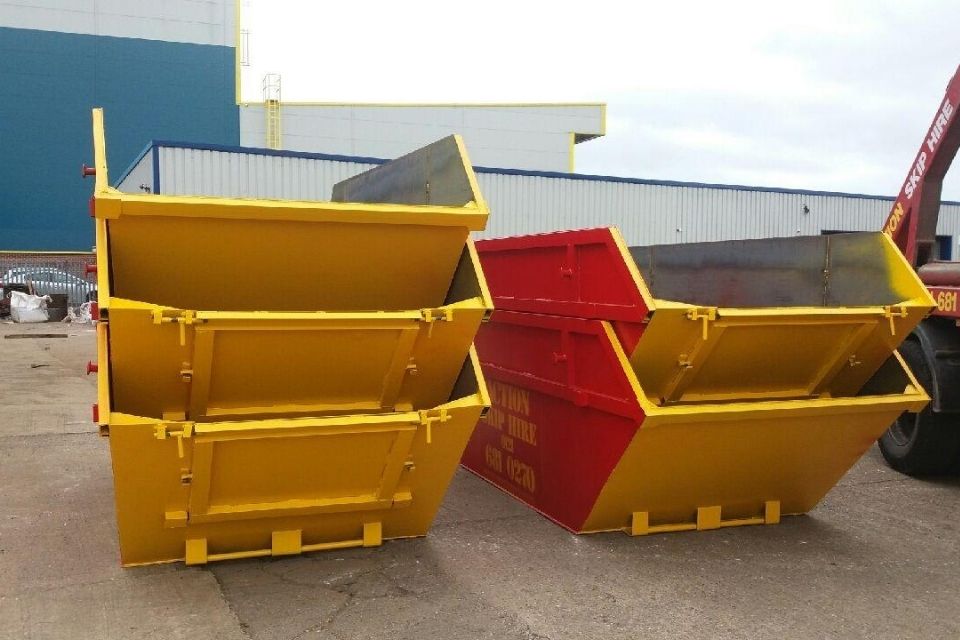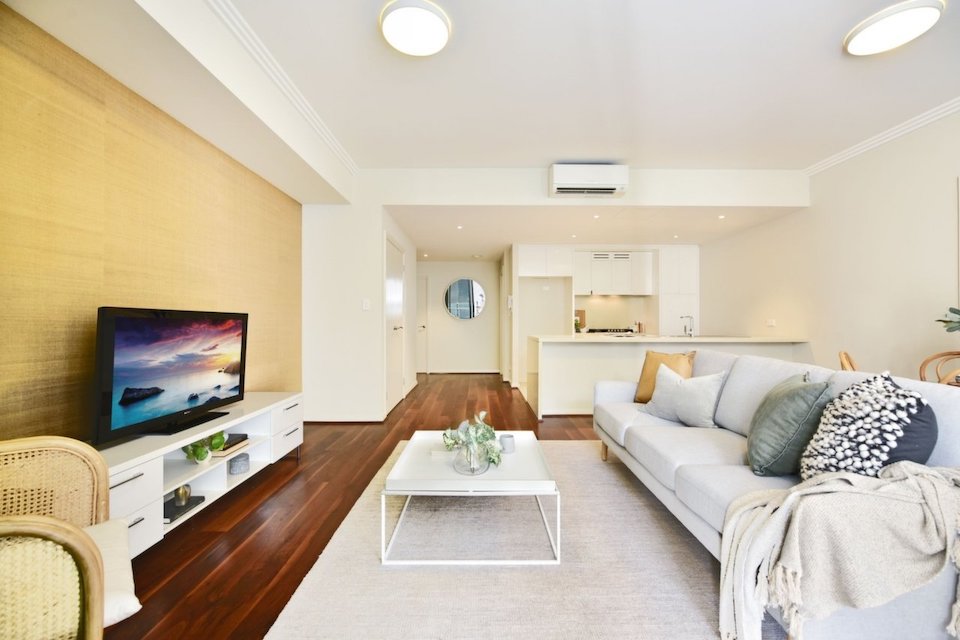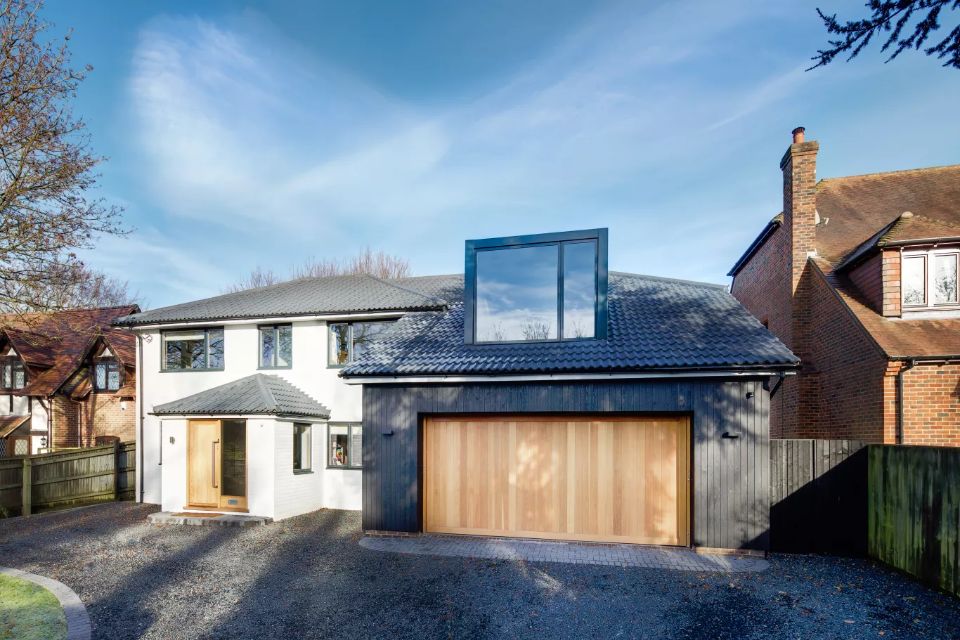How Much Does Underpinning Cost in 2025?
The cost of fixing subsidence will depend on the type of repair conducted, the extent of the damage and the number of tradespeople required for the job.
Hold on, what is subsidence anyway?
Subsidence is when significant movement occurs, or there is a loss of moisture, causing the foundations to shrink and sink.
If there are signs of significant movement, this must be repaired immediately by house subsidence experts.
What other considerations are there to think about?
Where you live will also determine the cost, as tradesmen rates vary across the UK.
Before any repairs are performed, a professional will advise a full building survey. A survey of this type normally costs around £300 to £2,000, which will assess the condition of the entire home.
They may also check the property's drainage by conducting a CCTV drain survey that ranges from £100 to £250. This involves sending a camera down the drains to record drainage activity and uncover any issues.
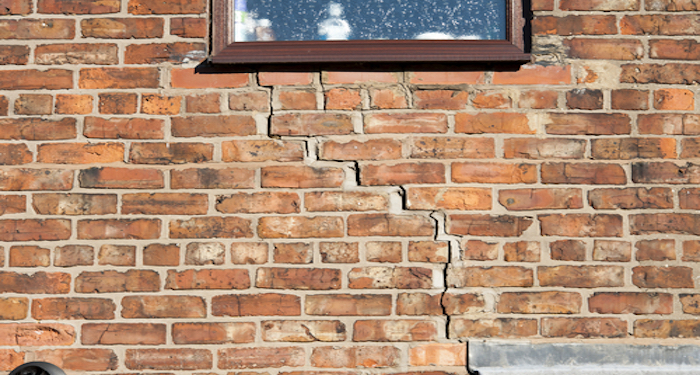
Once the cause has been determined, the tradesperson will then decide on the best type of repair.
One of the most common ground subsidence repairs is underpinning, which involves installing a solid foundation below the ground to provide support.
Let's look at some other factors that will determine the price...
There are several types of underpinning which vary in cost. The cheapest option is the resin injector method, which is typically priced at £1,200 per square metre, while the more traditional mass concrete underpinning costs around £1,500 per square metre.
The most expensive underpinning method is mini-piling which costs up to £2,750 per square metre.
Subsidence Repair Prices
To help you understand the different costs of underpinning, take a look at the following table. Please note all prices are approximate and may fluctuate depending on location, cost of materials and any unforeseen complications.
| Type of Underpinning | 2-bedroom terraced (1 single 4m wall) | 3-bedroom semi-detached (1 single 9m wall) | 4-bedroom detached (1 single 14m wall) |
|---|---|---|---|
| Mass concrete underpinning | £6,000 | £13,500 | £21,000 |
| Mini-piling underpinning | £11,000 | £23,000 | £35,500 |
| Resin injector underpinning | £4,500 | £11,000 | £16,000 |
Underpinning is not the only solution for fixing subsidence. The below table sets out additional subsidence repair prices:
| Subsidence Repairs | Average Cost |
|---|---|
| Gutter repairs | £18 - £30 per metre |
| Gutter replacement | £40 - £50 per metre |
| Drain repairs | £60 to £100 per metre |
| Drain replacement | £120 to £600 per metre |
| Tree felling | £70 - £2,500 |
What Additional Underpinning Costs Are There?
Along with subsidence foundation repairs, you may want to consider some additional jobs which can be added to your budget and completed at the same time and such as:
Brick Replacement
Subsidence can cause significant damage to walls, resulting in cracked and bricks which may need to be replaced.
You can purchase the bricks yourself in bulk at approximately £120 per square metre, whereas buying individually can cost around £10 to £20 per brick (which will potentially increase your overall cost quite considerably).
If hiring a builder, you should expect to pay anywhere from £150 to £400 per day. The labour cost will depend on how many bricks need replacing or the size of the wall.
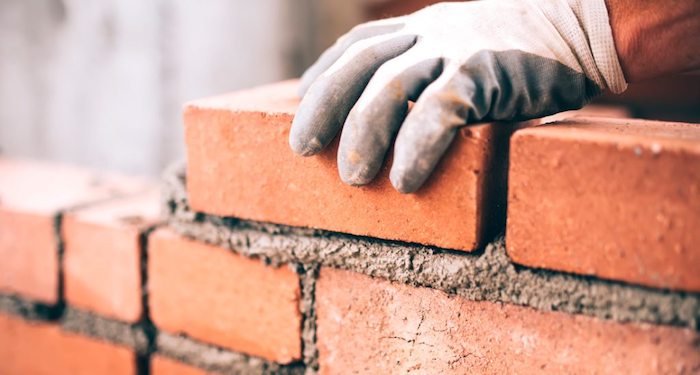
Brickwork Repointing
Another important cost you may want to factor into the overall cost is brickwork repointing. This will ensure that your old and new bricks are held together while also preventing damp from entering your home.
The average cost of brickwork repointing ranges from £20 to £50 per square metre. However, this may vary depending on the type of bricks you have, as the larger they are, the more expensive the job will be.
Exterior Wall Rendering
To further protect your property walls, you could consider rendering or re-rendering if your walls were rendered before subsidence occurred.
Professional rendering typically costs around £2,500 to £4,500 for a smooth render or up to £6,500 for pebble-dash rendering. Of course, this will depend on the size of your home and the area that requires rendering.

The total cost of subsidence repairs will depend on several other factors, including:
- Extra Labour Fees - Rates can vary depending on the location of your property. For example, homeowners in London will pay more than those located further North in the UK due to the higher cost of living. Likewise if you're in a remote area, cost may increase to cover travel expenses.
- Size of Property/Wall - This plays a significant role in determining the cost, as if you only have a small amount of subsidence on one specific wall, this will cost much less than fixing an entire home.
- Extent of Damage - The level of damage will also determine the amount of work required. However, if you catch the subsidence early enough, this can help keep the cost down where possible.
- Type of Repair Method - With underpinning the resin injector method is cheapest, with mini-piling the more costly option. If the subsidence is caused by a tree, then felling is often more affordable, although costs can vary greatly depending on the size of the tree that's causing the issue.
- Gutter/Drain Replacement - Comparatively these come at a much lower cost, although the price of repairs and replacements depend on how much guttering is required and the size of the drain affected.
Tradesmen Cost of Underpinning
The labour cost for subsidence repairs will normally depend on the methods used as some are more complicated than others.
You may also require different types of tradesman who charge varying rates.
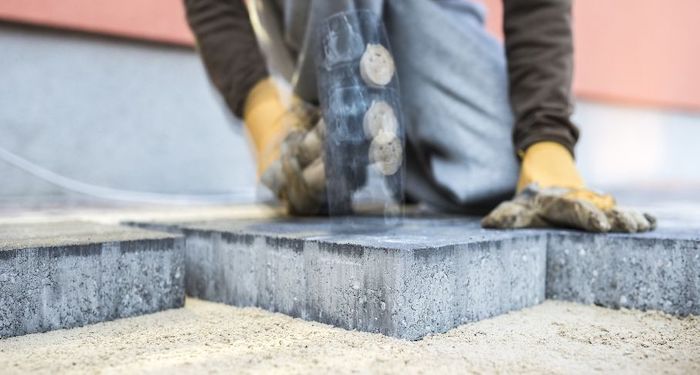
The below table sets out the costs of different types of tradespeople and their fees, although these can often be higher in London and the South East due to the cost of living and other overheads:
| Tradesperson | Hourly Rate | Daily Rate |
|---|---|---|
| Structural engineer | £50 to £100 | £300 - £500 |
| Tree surgeon | £40 to £55 | £400 - £500 |
| Plumber | £30 to £90 | £200 - £490 |
| Builder | £20 to £45 | £150 - £400 |
| Drainage specialist | £35 to £55 | £220 - £280 |
| Roofer | £20 to £45 | £190 - £260 |
Types of Subsidence Repairs
There are several ways to repair subsidence. To help you understand which method is right for you, take a look at the following guide, which sets out the different types, along with the costs and pros and cons of each.
Mass Concrete Underpinning Cost
The most traditional method of underpinning is using the mass concrete procedure. This repairs subsidence issues by extending the existing foundation until it becomes completely stable.
The soil underneath the old foundations will also be excavated in stages and replaced with concrete which will be left to cure.
The cost of mass concrete underpinning is typically around £1,500 per square metre.
Pros
- Ideal for shallow foundations
- Heavy machinery is not required
- Retains the old foundations
Cons
- Time-consuming process
- Concrete must be cured before a new pin is excavated
Mini-piling Underpinning Cost
If deep foundations are necessary for increased support, then the best option is mini-piling. This is also the best choice when moving foundations to suitable soil as it can accommodate various ground conditions.
This process involves the use of specialist piling equipment which can dig further down into the ground.
Mini piling costs around £2,750 per square metre.
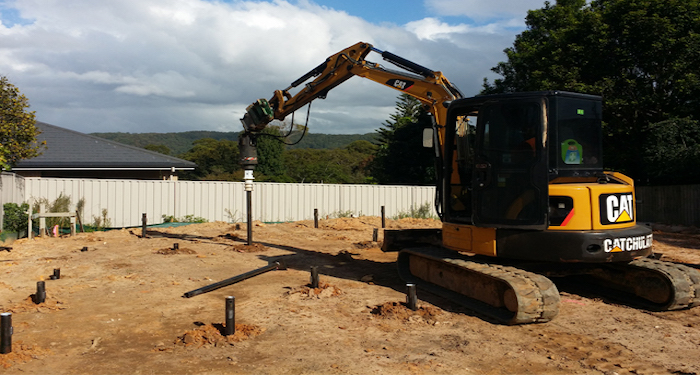
Pros
- Works well for foundations over 16ft
- Great for variable ground conditions
- Not as disruptive as traditional methods
Cons
- Most expensive option
- Requires specialist machinery
Resin Injector Underpinning Cost
Another underpinning method involves the use of a resin injector which is essentially a type of glue mixed with hardener that is injected into the ground under the existing foundations.
This mixture will chemically react in the ground causing it to expand and fill in any cracks or gaps.
This is one of the cheapest underpinning methods which costs approximately £1,200 per square metre.
Pros
- A fast and efficient method
- Non-disruptive
- Cheap option
Cons
- Not as durable as other methods
- Does not offer extensive stability
Tree Felling Cost
If subsidence occurs due to tree root damage, you may need to hire a professional tree surgeon to fell your tree(s).
This will involve cutting down the trees and roots to ensure they won't grow back and prevent them from causing future damage.
The cost of tree felling is around £70 to £2,500 per tree.
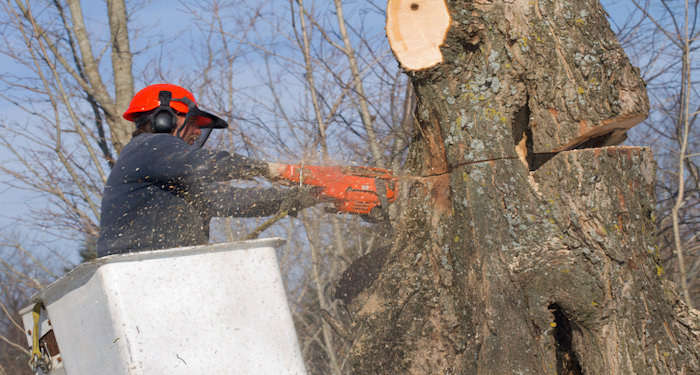
Pros
- Prevents future hazards
- Improves line of sight around the property
Cons
- Harmful to the environment
- Requires professional help
Guttering and Drainage Repairs Cost
One of the main causes of subsidence is leaking gutters and drains. If an excessive amount of water leaks into the soil, this can wash the foundations away, resulting in subsidence.
To fix this issue, you should have your gutters/drains repaired or replaced immediately to prevent further damage.
The cost of repairing gutters is around £18 to £30 per metre, while replacement costs about £40 to £50 per metre.
To repair your drains, you should expect to pay around £60 to £100 per metre or £120 to £600 per metre to replace your drainage.
Pros
- Prevents leaking and subsidence
- Stops water pooling
Cons
- Replacement can be expensive
- Drain and gutter maintenance is still required
Signs of Subsidence
Knowing the early signs of what to look for may lower the cost of subsidence repair by resolving the issue before it gets significantly worse. Here are some common signs to be aware of:
- Cracks in the Wall – In particular diagonal cracks that are wider than 3mm (often found near doors or windows).
- Misaligned joints - Gaps around skirting boards or the wall meeting the ceiling may appear if the structure becomes uneven.
- Tight doors and windows – Frames can warp as the property subsides, making them harder to open or close.
- Sloped floors – Floors that have started to change angle can suggest part of the foundation has sunk.
- Uneven Paint or Wallpaper - Decorated walls can start to appear rippled or bubble without any sign of damp
The above are all signs of potential subsidence, but if you spot these occurring or have any other concerns, then you should consult a structural engineer.
How Long Does It Take to Repair Subsidence?
The timeframe for subsidence repairs will again depend on the type of job and the extent of the damage caused.
For instance, the cost to fix subsidence with underpinning methods will take around three weeks, while the same job on a semi-detached property could take up to four weeks to complete.
A larger property, such as a four-bedroom detached house could take up to six weeks to fix subsidence.
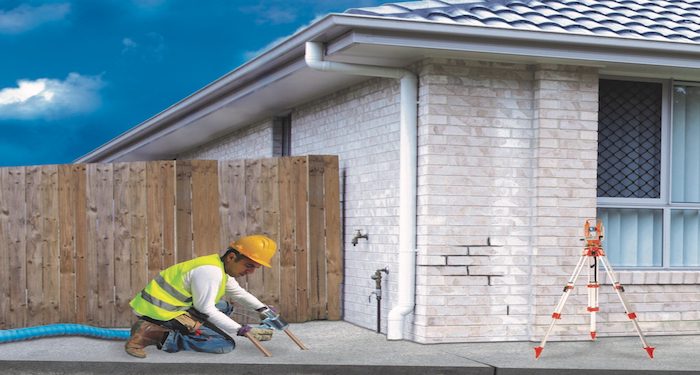
The duration for tree felling will vary depending on the size of the tree, as a small tree less than 25ft will typically take around 3 to 4 hours to cut down. In contrast, an extra-large tree over 75ft could take up to 5 days to remove.
For gutter repairs and replacement, you should expect the job to take anywhere from two to four hours for a two-bedroom terraced home or up to six hours for a four-bedroom detached property.
Drain repairs typically take around one to three hours to complete, while drain replacement can take anywhere from one to three days.
FAQs
Q: Do you have to declare subsidence when selling your home?
A: While it is not a legal requirement to declare subsidence, property experts advise that you should let potential buyers know, as they may find out the information from other sources.
Q: Is subsidence covered by home insurance?
A: Most home insurance policies in the UK cover subsidence, although it often comes with a high excess of over £1,000 (you should always check your individual policy details for first for further information).
Q: What is subsidence excess?
A: Subsidence excess is the amount you will pay when making a home insurance claim for subsidence repairs. This is typically a one-off payment which is paid before the job is complete.
Q: What does subsidence mean?
A: Subsidence is the process of gradual sinking or caving of the foundations surrounding property or land.
Q: What do subsidence cracks look like?
A: Subsidence cracks can be identified by size, as these types of cracks are normally at least 3mm thick and are around three times the size of standard hairline cracks. They can also be found on the inside and outside of a property.




